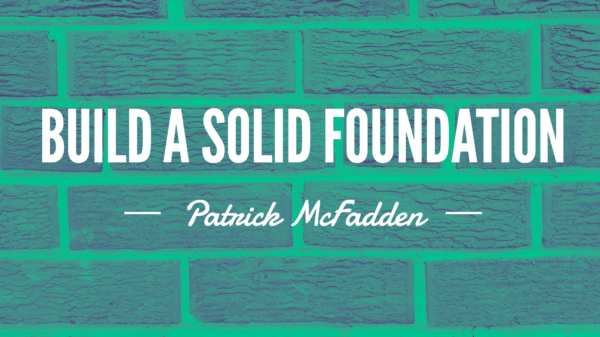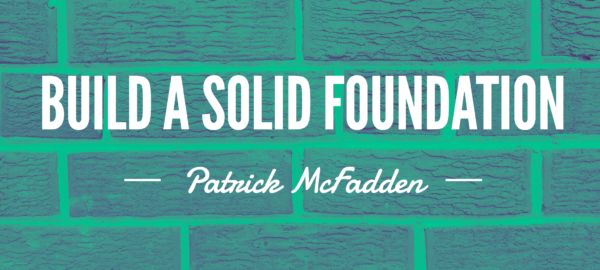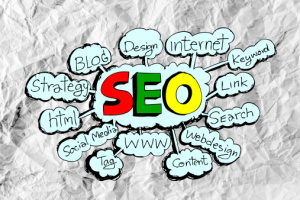— December 22, 2017
“Where do I begin?”
It’s the most common question I hear when it comes to small business marketing.
And it’s because the idea of marketing is so broad and vast.
- SEO.
- Pay-Pay-Click advertising.
- Content.
- Social media.
- Speaking.
- Advertising.
- Customer experience.
- Video.
- Customer journeys.
So where do business owners start?
The more important question to answer: where should you be going?

Begin with the Strategy in Mind
In my experience, small business owners mistakenly begin their marketing efforts with a tactical list of items.
And it sounds something like this.
- “We need a new website.”
- “We need email marketing.”
- “We need a blog.”
- “We need online video.”
- “We need a Facebook page.”
Yes, most of these elements are required for growth, but it’s essential to understand these are merely pieces of a much larger puzzle.
Instead of thinking solely about a website, it’s necessary to understand how your ideal customer and SEO integrates within the larger framework of a website.
Furthermore, it’s critical to recognize the role content plays throughout the customer journey, from awareness to educate to sample to purchase and then refer. That’s why at some point, business owners must accept that they’ll need to view marketing from a process point of view. See, the secret to winning the small business marketing game is to take a process approach based on strategy.
To help small business owners move beyond the self-diagnosed list of tactical items, we recommend starting your marketing journey with the strategy in mind.
And that is to build a Strategy Engine that targets, captures, nurtures and converts ideal prospects into business.
The Small Business Strategy Engine
#1. Identify your ideal customers
Don’t waste time marketing and selling to people who will never buy. Save time and energy by identifying and understanding your ideal customer.
Every day, 98% of business owners end up implementing tactics that FAIL for one simple reason: these tactics do not appeal to their ideal customer.
The secret to increasing your success isn’t more marketing — it’s targeting.Don’t squander your marketing budget and hundreds of hours generating leads that take your business nowhere. Find your ideal customer from the outset, and everyone wins.
Think about whom your 10 best customers are and what you need to do to attract 10 more just like them!
Dive Deeper
From your customer base above start looking at the characteristics of these successful accounts or best customers. You’re searching for any common characteristics that are shared by this base.
Here’s what you are deep diving for:
- Demographics — Business2Business (B2B) demographics could be the type of industry, problem or challenge, the job title of that individual, the years that a company has been in business, and/or revenue levels.Business2Consumer (B2C)the demographics could be age, sex, illness, income, and a particular area of town.
- Psychographics — Understand where do they hang out, what do they read, what do they listen to, what do they search online, what makes them tick, what triggers them to go looking for a solution
- Challenges or Problem — Make a list of all the problems you solve for ideal customers. If you’re having a tough time thinking about your ideal customer’s problems, think about the conversations you had leading up to your sales meeting, the things addressed in your customer interview or hopefully, you’re a good note taker and can revisit those for some insight.
- Real Quotes — Include a few real quotes taken during your interviews that represent your persona well. This will make it easier for employees to relate to and understand your persona.
#2. Find Your Differentiation
I can say without hesitation that being better is a waste of time, being different is where the money and competitive advantage is at.
Start developing and defining your differentiation from competitors. After you’ve defined your ideal customer, start scheduling some time with those current customers that fit that profile and ask them some very specific questions. This exercise may offer some insight into how you are different in ways that will attract other potential customers.
Examples:
- First Responder Cleaning. There are very few one-of-a-kind commercial cleaning services. They offer a 30 minute response time
- Punctual Plumber. We’re on time — offers to pay commercial customers $ 5 for every minute they’re late up to $ 300
- Attorney’s are notorious for not returning phone calls in a timely manner — one attorney offers a Return Call Guarantee. If clients’ calls aren’t returned within one business day, they’ll take $ 500 off the client’s next invoice
- Contractors frequently overbid projects and rely on the power behind their license as a justification — Guarantee your work to pass Building and Safety inspection or you will fix it for free
- Customer support doesn’t really care if you find a solution or not — offer a No Hang Up Guarantee “We don’t hang up until you’re happy”
- Marketing agencies and firms are known for unclear deliverables, lack of results and using confusing language — one marketing firm offers a very detail “proof of concept” with a set project price and clear deliverables.
#3. Create a Marketing Strategy Framework
Strategy thinking forces you to push your marketing strategy of your ideal customer and differentiation into every marketing activity. I’ve developed a very powerful approach to building this kind of framework.
My approach is a concept that asks you to create communication, processes, offerings, and campaigns aimed at strategically moving prospects and customers through five stages — Awareness, Education, Sample, Purchase and Refer. By viewing each of these stages as a place to appeal to ideal customers and reinforce your differentiation, you create the kind of framework that leads to your profitable customers.
Awareness — This is the phase where sales, social media, content, networking, public relations will do well and even search, advertising, and referrals start here.
- Do your online and offline ads communicate the differentiation? Do they target and offer to begin the relationship process with your ideal customers?
- Do your social media outpost have consistent images and messages?
- Are differentiation and problem-solving messages promoted on your website?
- Are your networking or partner marketing efforts targeted towards your ideal customer?
- Are your keywords consistent and focused on the phrases that actual prospects search for?
- Do you have a formalized process to handle referrals that come in?
Education — This is the stage where once you attract prospects to your website or location you have to give them reasons to come back, reasons to relate and even reasons to like your team and also provide reviews, success stories, and customer testimonials.
- Do your online and offline content assets include your message and brand identity?
- Do your business email signatures and cards include your differentiation?
- Is your vision and unique differentiation documented on your website for your ideal customers to relate to?
- Is your website showcasing reviews, success stories or testimonials?
- Are your ongoing communication campaigns consistent with your website branding? Do these communication initiatives go out on a regular basis and include valuable content for your audience? Is there an opt-in incentive for your content?
- Are your email campaigns consistent with your branding?
- Do you follow a content creation system to establish your company as an expert on focused topics?
- Do you regularly promote and monitor review sites?
Sample — Now that prospects are wondering how your solution might work for them it’s time to demonstrate to them with downloadable documents, galleries, reports, ebooks, webinars and very detailed how-to information. You might also have an assessment, audit, seminar, evaluation, trial version or low-cost offer here.
- What is your offering for prospects to sample your expertise, product or service?
- How do you encourage people to sign up for the offering?
Need some ideas? 7 Ways Prospects Can Sample Your Service or Product
- Demo — a group consulting model that would demonstrate expertise by offering advice and answering questions in a free weekly session that could be upgraded to one-on-one consulting
- 30–90 Minute Consultation or Coaching — A personal or life coach might create a “get unstuck” in 3 sessions mini engagement that allows someone to try out coaching without a long-term commitment
- Audit — a marketing firm may offer a free or low-cost audit providing solid recommendations that could turn into long-term paid projects
- Trial Offer — a home improvement contractor might create a 4-Hour You Point and We Fix starter offering
- Assessment — a structural engineering firm might sell a feasibility analysis as a product.
- Seminar or Workshop — a sales training and development firm might offer free a seminar with worksheets and CDs.
- Basic or Low-Cost Version — an accounting firm might sell a certain type of low-cost tax return.
Purchase — For this stage, the focus is still on educating but from the standpoint of a new customer
- Do your kits, contracts and invoices match your branding and communicate key information?
- Does your new customer gain access to key personnel or content?
- Does your new customer become part of an exclusive club?
Refer — The customer journey is ultimately about referrals
- How do you encourage or motivate your current customers to refer?
- Does your incentive for referrals connect with your culture in some way?
Business & Finance Articles on Business 2 Community
(73)
Report Post



